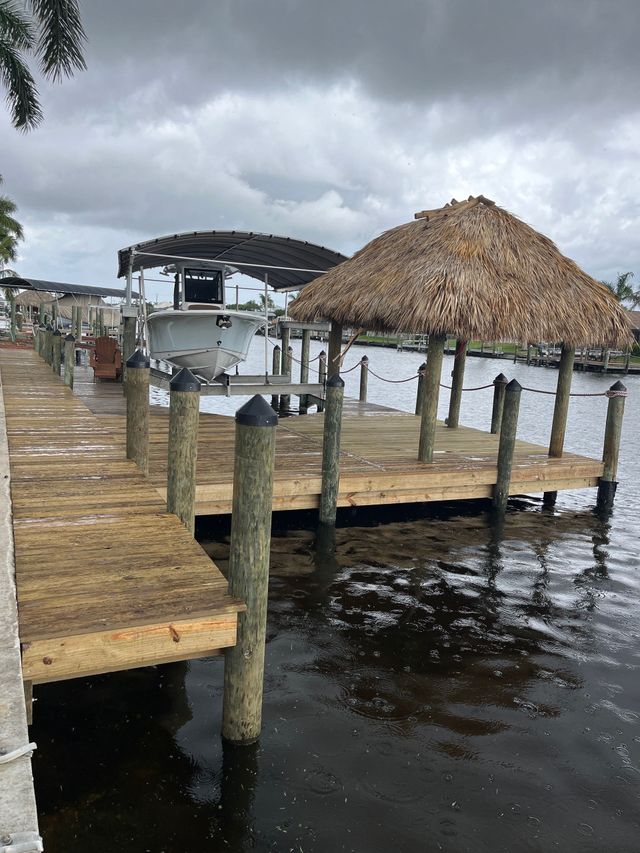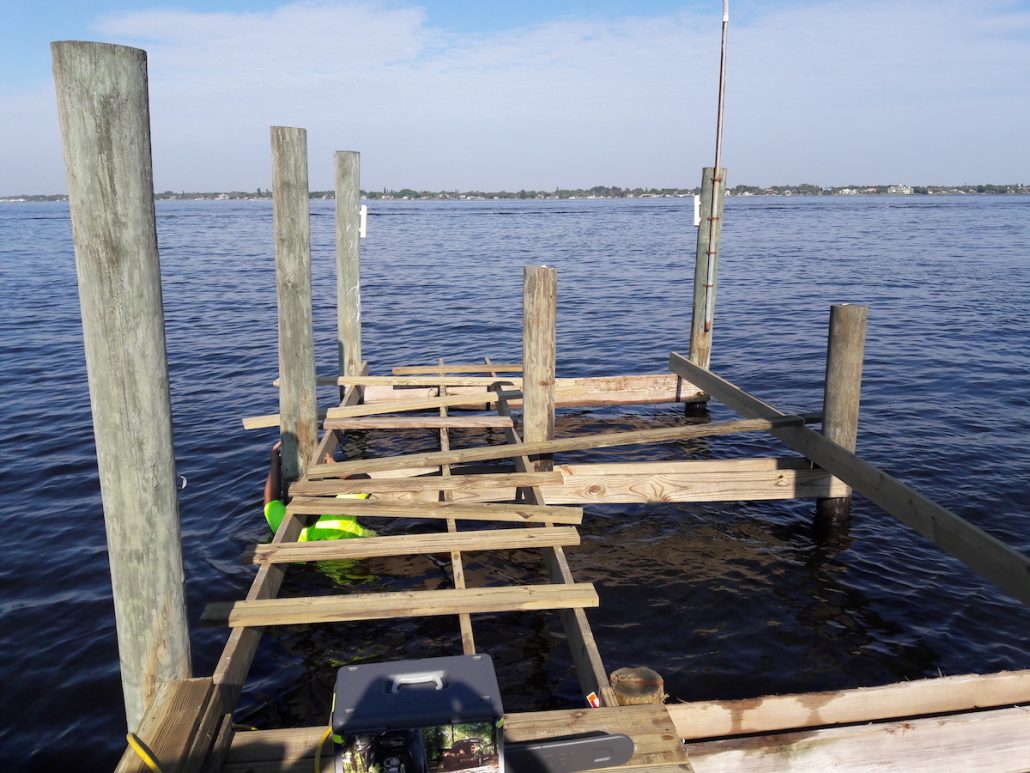Effective Dock Repair Service Techniques: Guaranteeing Structural Integrity
Guaranteeing the architectural stability of anchors through effective repair service methods is extremely important for the long life and security of aquatic centers. This includes a multi-faceted method starting with thorough examinations utilizing advanced technologies like finder equipment and remotely ran automobiles (ROVs) to discover both visible and hid damages. Subsequently, picking the best repair work products, such as corrosion-resistant alloys and composite products, is crucial for resilience. Architectural reinforcement approaches, consisting of the implementation of cross-bracing systems and load-distribution plates, play an essential function in mitigating stress factors. However, the value of these methods becomes noticeable when checking out innovative repair service methods and preventative maintenance strategies.
Analyzing Dock Damages
Evaluating dock damage is an essential initial action in making sure the architectural stability and security of any docking facility. Trick elements to check out consist of the dock's foundation, pilings, outdoor decking, and equipment (Dock Repairs).
Structural engineers or certified examiners typically perform these assessments utilizing specialized tools and strategies. As an example, undersea inspections could utilize sonar devices or remotely ran cars (ROVs) to identify submerged damages. Over water, aesthetic assessments are complemented by making use of wetness meters and other diagnostic devices to reveal underlying problems not instantly noticeable to the naked eye.

Choosing Repair Service Products
Picking the ideal fixing products is a pivotal action in the dock restoration process, one that directly affects the longevity and efficiency of the fixed framework. Product choice need to be driven by aspects such as ecological conditions, load-bearing demands, and compatibility with existing dock components. For instance, wood is a conventional option for docks due to its natural strength and visual charm. Picking the ideal type of wood, such as pressure-treated lumber or normally rot-resistant varieties like cedar or teak wood, is vital to endure aquatic environments.
Along with timber, composite materials are significantly popular because of their resilience and reduced maintenance needs. Compounds, normally made from a mix of plastic and timber fibers, offer outstanding resistance to rot, bugs, and UV damage. For steel docks, selecting corrosion-resistant alloys such as galvanized steel or marine-grade light weight aluminum is necessary to stop rust and guarantee architectural honesty in saline water conditions.
Epoxy resins and marine-grade sealants are essential for repairing splits and securing joints, supplying a water-proof obstacle and boosting the dock's total stamina. By carefully selecting high-grade materials, dock repair work can achieve durable results, thus guarding versus future degradation and guaranteeing safe, reputable use.
Architectural Support Strategies
Efficient architectural reinforcement techniques are crucial in making sure the stability and longevity of dock repair work. One basic method entails the usage of steel or composite support bars (rebar) within concrete structures. Rebar provides added tensile strength, stopping splits and distributing tons extra evenly. This approach is especially effective for docks subjected to heavy lots or severe ecological problems.
An additional necessary strategy is the application of fiber-reinforced polymers (FRP) These products provide high strength-to-weight proportions and outstanding resistance to corrosion, making them excellent for enhancing wood or concrete docks. FRP can be used in strips or sheets and adhered with epoxy resins to boost structural integrity.
Supporting and securing systems likewise play a critical role in architectural reinforcement. Cross-bracing, using steel or wood beam of lights, can counteract side forces, decreasing swaying and motion. Anchoring systems, such as helical piers or driven stacks, supply a stable foundation by moving lots to much deeper, extra secure soil layers.
Last but not least, the integration of load-distribution plates can aid disperse weight more equally throughout the dock's surface, mitigating local tension factors. These strategies jointly make sure that docks continue to be robust and risk-free, capable of standing up to the rigors of their functional environment.
Advanced Repair Service Techniques

Another innovative method involves undersea welding, which enables fixings to be conducted without the need to dewater the location. This approach is particularly helpful for dealing with architectural issues in submerged dock components, making sure marginal interruption to procedures. Improved welding methods, combined with robot systems, provide precision and integrity, consequently prolonging the life-span of the dock.
Additionally, cathodic defense systems are applied to protect against deterioration in metal dock frameworks. By utilizing sacrificial anodes or impressed present systems, these methods successfully minimize the electrochemical processes that result in product deterioration.
Finally, advanced monitoring modern technologies, such as structural wellness surveillance (SHM) systems, give real-time data on the problem of dock frameworks. These systems enable positive maintenance and timely treatments, eventually guaranteeing the long-lasting structural honesty of the dock.
Maintenance and Avoidance
Maintenance and prevention are fundamental principles that underpin the long life and safety and security of dock structures. Routine examinations are critical, permitting early discovery of wear and tear, prospective weak points, and environmental explanation impacts. A proactive technique, including routine checks for corrosion, rot, and structural shifts, reduces pricey repair services and prolongs the dock's operational life.
Safety nets must consist of using safety finishes to steel components to protect against rust and utilizing cured wood to resist degeneration. Furthermore, making certain appropriate drain and ventilation can avoid water build-up, which is a common reason for structural destruction. Including quality materials and sticking to producer standards during construction and repair work phases likewise play critical functions in enhancing resilience.

Educating workers in dock upkeep finest practices guarantees regular application of safety nets. Leveraging technical advances, such as drones for inspections and sensors for real-time monitoring, can additionally enhance upkeep initiatives. By focusing on upkeep and avoidance, dock proprietors can make sure architectural honesty, functional security, and economical monitoring over the dock's life-span.
Conclusion
In verdict, maintaining the architectural stability of marine centers demands comprehensive dock repair service techniques. Advanced repair service techniques, coupled with normal maintenance techniques, guarantee the dock continues to be operational and safe under diverse ecological problems.
Ensuring the structural integrity of docks through effective repair techniques is critical for the longevity and safety of marine facilities.Selecting the appropriate repair products is a crucial action you can check here in the dock reconstruction procedure, one that directly influences the longevity and efficiency of the fixed framework.Efficient structural support strategies are critical in making certain the security and durability of dock fixings. By focusing on maintenance and prevention, dock proprietors can guarantee structural stability, operational security, and cost-effective administration over the dock's life expectancy.
In conclusion, maintaining the architectural stability of marine centers requires extensive dock repair strategies.